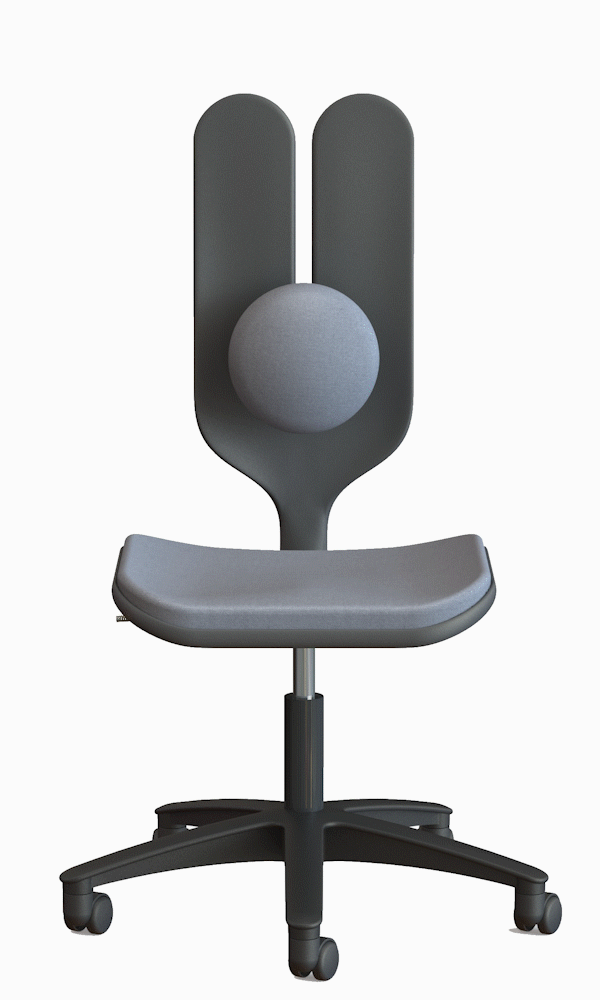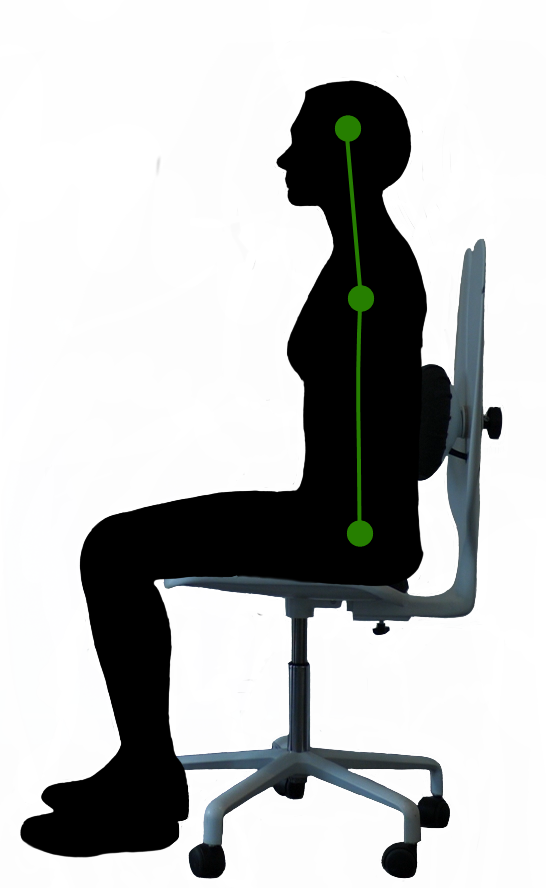I worked as a physiotherapist for over 20 years and treated hundreds of patients with back and neck pain. This very common problem has one common theme: poor sitting posture at work. If you slump at your desk for 8 hours a day then no amount of treatment will reverse the changes that occur and you are condemned to visiting your therapist forever – or until surgical intervention becomes necessary.
One may say that it is an unavoidable condition of the modern age: people have to sit to work. But when I considered this issue, I concluded that it’s not the sitting itself which is the real problem, it’s the chairs. They are poorly designed and support the back at the wrong level, causing long-term damage to the sitter.
How did this happen? For some reason, designers of conventional office chairs felt that a chair must replicate the standing S-shape of the spine, assuming that this was the body’s natural position. It was a mistake as they did not recognise that muscle pull and the body’s balancing strategy is reversed in sitting vs standing. These chairs provide lumbar support that hits the spine too low, unbalancing the body and allowing the collapse of the ribcage and head. This static unbalanced posture unremittingly loads the lower back and neck day after day, accelerating arthritic change and causing pain.
When the body moves from standing to sitting the spine naturally shifts from an S to a C shape. I realised that if you provide support at the balance point (or keystone) of this curve, the backward collapse of the spine is prevented and everything else is pulled into alignment. No other support is needed: this one keystone vertebra controls everything. Its level is different for everyone and, critically, is higher than the typical lumbar support of conventional chairs. It also varies with the height of the seat. An effective chair must allow for this.
With this in mind, I set about the arduous task of making a prototype – not an easy process, especially as I was working alone without the backing of a company. My minimalist design incorporated a single moveable back support to suit each user. After a few painstaking years I produced some prototypes, and the response was overwhelming: none of the triallers could contemplate going back to their old chairs.
This gave me the confidence to raise funds to set up my own chair company. Based on feedback and further thinking on my part, I made several improvements to the prototype, with a special emphasis on the back cushion which took almost a year to perfect. Its convex shape allows movement of the spine during the day – the user can arch over or rotate around it – so static loading is reduced.
I started selling the ephgrave chair at the beginning of the year. The feedback has been amazing.
The question people often ask me is why haven’t the big chair companies realised this after all these years and changed the way their chairs support the back? I feel that the concept of lumbar support and an S-shaped spine is so entrenched that it would be very difficult to effect a change, even if designers at established chair companies were open to it. “We already have ergonomic chairs”: If that’s the case, why then has back and neck pain remained so prevalent?
The reality is that if we want to solve this expensive and perennial problem, we have to change the way we sit. That’s what the ephgrave chair is about.




